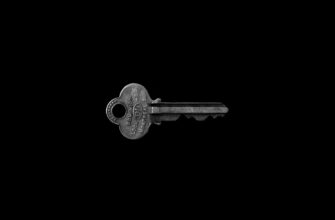🎮 Level Up with $RESOLV Airdrop!
💎 Grab your free $RESOLV tokens — no quests, just rewards!
🕹️ Register and claim within a month. It’s your bonus round!
🎯 No risk, just your shot at building crypto riches!
🎉 Early birds win the most — join the drop before it's game over!
🧩 Simple, fun, and potentially very profitable.
- Why Encrypting Your Ledger Cold Storage Is Non-Negotiable
- Preparation Checklist: Gather These Essentials
- Step-by-Step: Encrypt Your Ledger in Cold Storage
- Step 1: Initialize Your Ledger Device
- Step 2: Create a Bulletproof PIN
- Step 3: Record Your Recovery Phrase Offline
- Step 4: Enable Advanced Passphrase Encryption
- Step 5: Transfer Crypto to Encrypted Addresses
- Critical Maintenance Protocols
- FAQs: Ledger Cold Storage Encryption
- Can I Encrypt an Existing Ledger Wallet?
- What Happens If I Lose My Passphrase?
- Is a Passphrase More Secure Than a PIN?
- Can Malware Steal My Passphrase?
- How Often Should I Update Encryption?
- Final Security Verdict
Why Encrypting Your Ledger Cold Storage Is Non-Negotiable
Cold storage keeps crypto wallets offline, shielding them from hackers—but without encryption, physical theft could still compromise your assets. Encrypting your Ledger device adds a critical security layer, transforming your hardware wallet into a digital fortress. This guide delivers a foolproof, step-by-step process to encrypt your Ledger in cold storage, ensuring even if someone accesses your device, your crypto remains locked away.
Preparation Checklist: Gather These Essentials
- Ledger hardware wallet (Nano S, Nano X, or Nano S Plus)
- Recovery sheet for recording credentials
- USB cable and power source
- Ledger Live app installed on your computer
- Private workspace free from cameras or observers
- Offline password manager (optional for passphrase storage)
Step-by-Step: Encrypt Your Ledger in Cold Storage
Step 1: Initialize Your Ledger Device
Connect your Ledger to a trusted computer via USB. Open Ledger Live and select “Set up as new device.” Follow on-screen prompts to install the latest firmware—critical for security patches.
Step 2: Create a Bulletproof PIN
- Choose an 8-digit PIN (maximum length for brute-force protection)
- Avoid birthdays or sequential numbers (e.g., 12345678)
- Confirm the PIN twice. Three incorrect entries will factory-reset the device.
Step 3: Record Your Recovery Phrase Offline
Your device generates a 24-word recovery phrase. Write it by hand on the recovery sheet—never digitally. Store it in a fireproof safe or bank vault. This phrase restores access if you forget your PIN or passphrase.
Step 4: Enable Advanced Passphrase Encryption
- In Ledger Live, go to Settings > Security > Passphrase
- Select “Attach to PIN”
- Create a 25th-word passphrase (e.g., 5-32 random characters)
- Link it to a secondary PIN for decryption access
Pro Tip: Use a passphrase manager like KeePassXC (offline) to store it—never reuse existing passwords.
Step 5: Transfer Crypto to Encrypted Addresses
Generate new receiving addresses in Ledger Live after enabling encryption. Send test transactions first (small amounts), then move your full balance. Your assets now exist behind three layers: device PIN, passphrase, and cold storage isolation.
Critical Maintenance Protocols
- Firmware Updates: Check quarterly via Ledger Live (connected offline)
- Passphrase Backups: Store separately from your 24-word phrase
- Physical Security: Use tamper-evident bags for storage devices
- Decoy Wallets: Maintain a small-fund wallet with primary PIN only
FAQs: Ledger Cold Storage Encryption
Can I Encrypt an Existing Ledger Wallet?
Yes! Reset the device via Settings > Security > Reset, then reinitialize with a passphrase. Warning: You’ll need your recovery phrase to restore funds first.
What Happens If I Lose My Passphrase?
Without the passphrase, encrypted funds become irrecoverable. Your 24-word phrase alone can’t access them—always back up both.
Is a Passphrase More Secure Than a PIN?
They serve different purposes: PIN protects device access, while passphrase encrypts the seed. Use both for maximum security.
Can Malware Steal My Passphrase?
No. Passphrases never leave your Ledger device. Malware can only intercept transactions you approve on-screen.
How Often Should I Update Encryption?
Change your passphrase annually or after suspected breaches. PIN changes require device reset—weigh risks carefully.
Final Security Verdict
Encrypting your Ledger in cold storage transforms passive protection into active defense. By following these steps, you’ve created a multi-layered shield against both digital and physical threats. Remember: Your passphrase is the ultimate key—guard it like the fortune it protects. Now disconnect that USB cable, stash your hardware wallet in a secure location, and breathe easier knowing your crypto fortress is sealed.
🎮 Level Up with $RESOLV Airdrop!
💎 Grab your free $RESOLV tokens — no quests, just rewards!
🕹️ Register and claim within a month. It’s your bonus round!
🎯 No risk, just your shot at building crypto riches!
🎉 Early birds win the most — join the drop before it's game over!
🧩 Simple, fun, and potentially very profitable.








